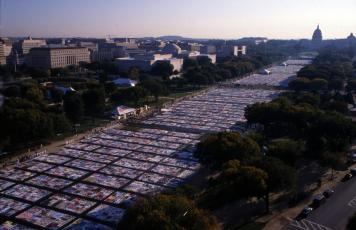Vicarious research is one of the great joys of the reference desk at the Smithsonian Institution Archives. From our front-row (well, only-row) seat outside the reading room, we catch tantalizing glimpses of our patrons’ manifold research topics.
The reference team fields thousands of questions per year. Ask us what people have been researching recently, and you’ll get into some of the enlightening, weird, and fascinating details of our collections.
Here are some of the subjects that have recently passed through the reference team’s inbox:
- 1930 exhibitions of the Federal Art Project
- Names of the National Zoo bison through the 1920s
- The Natural Resource Conservation and Historic Preservation Project in the Central Region of Ghana…aka the Ghana Project
- Aviation legends honored at the dedication of the Udvar-Hazy Center in 2003
- Panama fieldwork of Charles O. Handley, Jr.
- Sale of a Sylacauga meteorite fragment to the Smithsonian
- Lucy Audubon's sale of the copper plates from The Birds of North America
- William Stimpson and his eponymous surfclam, Mactromeris polynyma
New and upcoming projects featuring SI Archives images include:
- A fossil documentary made by Idaho Public Television: overburden being stripped from the fossil horse quarry near Hagerman, Idaho
- Zackary Graham’s upcoming book, Crayfish, Crawfish, Crawdad: a portrait of Horton H. Hobbs, Jr. feeding a crawfish
- MFA Boston’s upcoming traveling exhibit “Fabric of a Nation: American Quilt Stories”: aerial image of the AIDS Memorial Quilt
- The Asian Pacific American Center’s upcoming book, APA 101: view of the Polynesian ethnology exhibit cases in the Anthropology Hall, circa 1911
- Abby Schulte’s recent article “Few Ladies Ever Sit”: Dolley Madison diorama installation in the First Ladies Hall, 1961
- OMR Gallery exhibition “Upward Panic”: images from the Alice Pike Barney Papers



How to get published in the nineteenth century
If you're an early Smithsonian history whiz, you'll know that Secretary Joseph Henry took diffusion of knowledge very seriously. The International Exchange Service made the Smithsonian a centralized hub of scholarship, importing and shipping out thousands of publications each year. The Institution also produced original scholarship through its series Contributions to Knowledge.
During the Civil War, a second series joined Contributions: this one had the juicy title Smithsonian Miscellaneous Collections. But why the need for two publications? How did they differ? A recent reference question about the peer review process got us wondering.
Although the peer review process has become more standardized over the last fifty years, it has had recognizable forerunners since the early eighteenth century. The Smithsonian, too, had its own permutation of peer review.
In 1847, with the publication of the Smithsonian’s Programme of Organization, Secretary Henry had the chance to frame that process: “3. Each memoir presented to the Institution to be submitted for examination to a commission of persons of reputation for learning in the branch to which the memoir pertains, and to be accepted for publication only in case the report of this commission is favorable.”
This exact passage appears again, half a century later, in librarian Cyrus Adler’s book chapter on Smithsonian publications. “The program of organization, submitted by Professor Henry, in 1847, may still be said to guide the issuing of these volumes,” he says of Contributions to Knowledge.
Did the Programme of Organization also guide Miscellaneous Collections? Were its standards just as rigorous as for Contributions? Maybe not: Adler’s discussion of the second series appears on a separate page, far from any mention of Joseph Henry’s “commission of persons of reputation.” It seems a telling omission that Contributions alone is the subject of Adler’s commendation.
Want to help us unravel this mystery further? Dig into Record Unit 83, the Editorial and Publications Division records, 1847-1966, in the Archives reading room!
Related Resources or Collections:
- Hot Topix in Archival Research, Summer https://siarchives.si.edu/blog/hot-topix-archival-research-summer-2022
- Hot Topix in Archival Research, Spring 2022 https://siarchives.si.edu/blog/hot-topix-archival-research-spring-2022
Produced by the Smithsonian Institution Archives. For copyright questions, please see the Terms of Use.

Leave a Comment